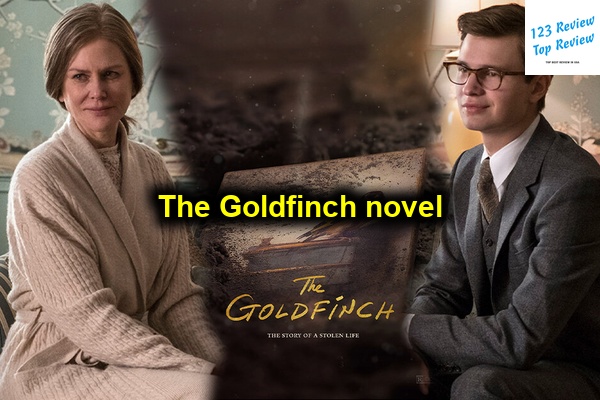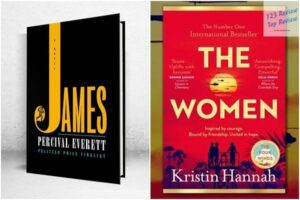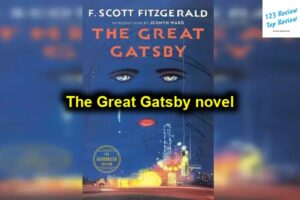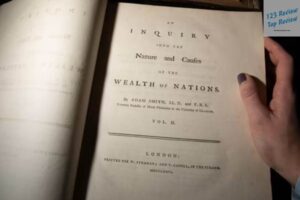Since its release in 2013, the novel has captivated readers with its rich narrative and complex characters. In this article, 123 Review will provide an in-depth analysis of The Goldfinch, examining its themes, character dynamics, narrative style, critical reception, adaptations, and recommendations for readers.
Themes in The Goldfinch
Exploration of Art and Beauty
At the heart of The Goldfinch is a profound exploration of art and beauty, particularly encapsulated in the titular painting by Carel Fabritius. The novel opens with a tragic event: a terrorist attack at the Metropolitan Museum of Art, which results in the death of Theo Decker’s mother and his subsequent theft of the painting. This act of theft sets off a chain of events that takes Theo through a complex journey of grief and survival.

The significance of the painting evolves throughout the narrative, representing not only a connection to Theo’s lost mother but also a symbol of beauty amidst chaos. Tartt investigates the role of art in providing solace and meaning in times of turmoil. As Theo navigates a world marred by violence and tragedy, his relationship with the painting reminds readers of the transcendent power of art to illustrate human experience, evoke emotions, and foster connections.
The Impact of Loss and Grief
Loss permeates the narrative of The Goldfinch, profoundly shaping Theo Decker’s psyche. The early death of his mother during the bombing leaves Theo grappling with deep emotional scars. His journey showcases various manifestations of grief, from denial to anger and confusion. Tartt vividly portrays how loss can distort one’s identity, leading to destructive behaviors as Theo becomes increasingly detached from a sense of normalcy.
Tartt’s exploration of grief extends beyond Theo to encompass the broader human experience. Each character grapples with loss in unique ways, including the loss of innocence, family, and personal identity. As Theo embarks on his journey, the examination of grief reveals the enduring impact it has on individuals, shaping their relationships and choices in life.
Redemption and Forgiveness
Another prominent theme in The Goldfinch is the possibility of redemption, often juxtaposed with the weight of guilt. Theo’s sense of responsibility for his mother’s death compels him down a tumultuous path filled with criminality and moral compromise. Throughout the novel, Tartt highlights the struggle between self-destruction and the desire for redemption.
Theo’s journey towards forgiveness, particularly in reconciling with his past actions and relationships, is a central focus. Characters such as Boris and Hobie serve as crucial touchstones in Theo’s quest for redemption, offering contrasting perspectives on loyalty and forgiveness. Ultimately, Tartt suggests that redemption is a multifaceted process, deeply intertwined with the complexities of human connections and the pursuit of beauty in life.
Character Analysis
Theo Decker: A Journey of Identity
At the center of The Goldfinch is Theo Decker, whose coming-of-age journey unfolds amidst the backdrop of trauma and upheaval. Theo’s character development is intricately tied to his experiences of loss and the choices he makes in response to his circumstances. His journey can be viewed as a search for identity, one that is continually shaped by fleeting relationships and personal struggles.
From his early life in Manhattan, filled with love and warmth with his mother, to the ensuing chaos after her death, Theo’s narrative is marked by a constant struggle to reclaim a sense of self. His attempts to navigate adolescence while grappling with grief and guilt lead him down a tumultuous path filled with complex decisions, friendships, and bruising encounters. Tartt deftly portrays Theo’s internal conflicts, making him a relatable and deeply human character.
Boris Pavlikovsky: The Complex Friendship
Boris Pavlikovsky is one of the most intriguing characters in The Goldfinch. He embodies both the chaotic nature of life and the transformative power of friendship. Boris, a witty and resourceful friend, serves as a foil to Theo, introducing him to a world of danger, thrill, and moral ambiguity. Their friendship oscillates between loyalty and betrayal, reflecting the complexities inherent in close relationships.
Boris’s background contrasts sharply with Theo’s privileged upbringing, exposing the disparities between their lives. He brings a unique perspective on loss and survival, having faced his own hardships. Through Boris, Tartt explores the idea that friendship can be both a source of salvation and a catalyst for self-destruction. Their bond propels the narrative forward, emphasizing the impact of relationships on personal growth and self-discovery.
Hobart “Hobie” Hobart: The Figure of Stability
Hobart “Hobie” Hobart serves as a stabilizing force in Theo’s life. As an antique furniture restorer and a father figure, Hobie embodies the values of honesty, patience, and craftsmanship. Hobie’s presence provides Theo with a sense of safety in a tumultuous world. His workshop becomes a refuge for Theo, representing a space where art, beauty, and connection flourish.
Through Hobie, Tartt illustrates the importance of mentorship and stability in the face of chaos. Hobie’s unwavering support helps guide Theo on a path toward redemption, emphasizing the power of nurturing relationships in helping individuals heal from loss and trauma. Hobie’s character reinforces the notion that love and support can come in unexpected forms, affirming the enduring bonds between individuals.
Narrative Style
Non-linear Storytelling
The Goldfinch employs a non-linear narrative structure that allows readers to delve into Theo’s mind and experiences intricately. Tartt frequently shifts timelines, weaving together past and present moments. This technique reflects the fragmented nature of memory and the impact of trauma on perception.
The non-linear storytelling enhances the depth of the narrative, inviting readers to engage with Theo’s psyche as he grapples with loss and identity. By moving back and forth in time, Tartt captures the complexity of human experience and the interconnectedness of events. The episodic nature of the narrative mirrors Theo’s chaotic life, effectively portraying his emotional state and struggle to make sense of his past.
Use of Symbolism
Tartt masterfully employs symbolism throughout The Goldfinch, with the titular painting serving as a crucial emblem of beauty, loss, and redemption. The Goldfinch itself represents both the potential for artistry and the fragility of life. It becomes a poignant reminder for Theo of his mother, his connection to the aesthetic world, and his search for meaning in the chaos.
Additionally, objects found throughout the novel—like the antique furniture Hobie restores—symbolize threads of human connection, memory, and the possibility of renewal. Tartt’s adept use of symbolism enriches the narrative, providing layers of meaning that invite readers to reflect on the broader implications of her themes.
Language and Imagery in Tartt’s Writing
Donna Tartt’s prose is characterized by its lyrical and evocative language. Her vivid imagery brings the world and its characters to life, immersing readers in the intricate details of their experiences. Tartt’s craftsmanship shines through her ability to articulate complex emotions and ideas with clarity and beauty.
The use of descriptive language creates a sensory experience, allowing readers to feel the weight of Theo’s grief, the vibrancy of the world of art, and the tension inherent in his relationships. This careful attention to detail enhances the emotional resonance of The Goldfinch, making it a compelling read that lingers in the hearts and minds of its audience.
Critical Reception
Praise from Literary Critics
Upon its release, The Goldfinch received widespread acclaim from literary critics and audiences alike. Many praised Tartt’s intricate storytelling, character development, and the profound exploration of themes such as loss, art, and identity. Critics lauded her ability to weave together a complex narrative that combines elements of tragedy, adventure, and psychological depth.
The novel’s ambitious scope and literary craftsmanship earned it comparisons to classic works of literature. The emotional weight and philosophical inquiries present in Tartt’s writing resonated with readers, illustrating the universal nature of the human experience. The Pulitzer Prize for Fiction awarded to The Goldfinch in 2014 reaffirmed its standing in contemporary literature.
Common Criticisms and Drawbacks
Despite its acclaim, The Goldfinch also faced criticism. Some reviewers described its length—over 700 pages—as excessive, arguing that the narrative could have benefitted from tighter editing. Certain plot elements were considered convoluted, with some readers feeling that the story occasionally meandered without clear resolution.
Additionally, while many found Tartt’s prose beautiful, others pointed out that the lyrical style could detract from the pacing, causing sections of the novel to feel drawn out. These criticisms reveal the dichotomy in reader responses—while some appreciated the depth and richness, others sought a more streamlined narrative.
Comparison with Dickensian Literature
The Goldfinch invites comparisons to the works of Charles Dickens, particularly in its exploration of social class, moral complexity, and the journey of its protagonist. Just as Dickens’s characters often navigate turbulent social landscapes, Theo’s journey reflects the struggles of identity, belonging, and the impact of circumstance on one’s life trajectory.
Tartt, like Dickens, crafts a vivid world populated by memorable characters, highlighting the interplay between personal and societal challenges. The novel’s attention to detail and intricate storytelling resonates with Dickensian themes of resilience in the face of adversity, emphasizing the moral dilemmas that arise in life’s journey.
Adaptations of The Goldfinch
The Film Adaptation: Successes and Failures
In 2019, The Goldfinch was adapted into a film directed by John Crowley, featuring Ansel Elgort as Theo and Oakes Fegley as young Theo. While the film generated considerable anticipation, it ultimately received mixed reviews from critics and audiences.
Critics noted that while the film visually captured the novel’s stunning moments, it struggled to encapsulate the depth of feelings and complexity of relationships found in Tartt’s prose. Some reviewers pointed out that the adaptation seemed rushed, omitting essential character developments and thematic nuances that defined the original work.
Reception of the Film Compared to the Novel
The reception of the film adaptation diverged significantly from that of the novel. Readers of The Goldfinch often expressed disappointment with how certain characters and story arcs were condensed or altered, diluting the richness of Tartt’s narrative. The emotional weight and layered introspection central to the novel were challenging to translate into the film medium, leading to a reception that failed to satisfy many fans of the book.
While the film garnered some praise for its performances and cinematography, it ultimately struggled to resonate with audiences as powerfully as the novel had. This highlights the challenges of adapting complex literary works into film, as the nuances of character and internal conflict can often be lost in translation.
Recommendations for Readers
Similar Novels to Explore
For readers who enjoyed The Goldfinch, several other novels may resonate, offering similar themes and narrative depth:
- A Little Life by Hanya Yanagihara: This novel delves into the complexities of friendship, trauma, and the search for meaning. It follows four friends as they navigate the ups and downs of life, examining the lasting impact of past experiences.
- The Secret History by Donna Tartt: Tartt’s debut novel explores themes of morality, art, and obsession among a group of college students studying classical Greek. The intricacies of their relationships echo the complexities found in The Goldfinch.
- The Shadow of the Wind by Carlos Ruiz Zafón: This literary mystery is set in post-war Barcelona and revolves around the discovery of a forgotten book. Themes of loss, love, and the power of literature intertwine in a narrative rich with symbolism and beautiful prose.
- The Amazing Adventures of Kavalier & Clay by Michael Chabon: This Pulitzer Prize-winning novel narrates the journey of two Jewish cousins during WWII, exploring themes of art, identity, and the impact of history on personal lives.
Why Readers Should Dive into The Goldfinch
Readers should consider diving into The Goldfinch for its intricate storytelling, richly developed characters, and profound themes that resonate deeply with the human experience. Tartt’s ability to create an immersive narrative explored through the lens of grief, beauty, and redemption captivates audiences and invites introspection.
Additionally, the novel’s exploration of art remains relevant in a fast-paced world, reminding readers of the transformative power of creativity and the human connection to beauty. Tartt’s lush prose provides an experience that immerses readers in the emotional depths of the characters’ lives, making The Goldfinch a profoundly rewarding reading experience.
In conclusion, The Goldfinch is a monumental work that captures the intricacies of existence through the lens of art, loss, and identity. Tartt’s masterful storytelling and character development invite readers on a journey that resonates long after the final pages are turned. Whether embraced for its themes or admired for its language, The Goldfinch stands as a cornerstone of contemporary literature, worthy of exploration and discussion.





